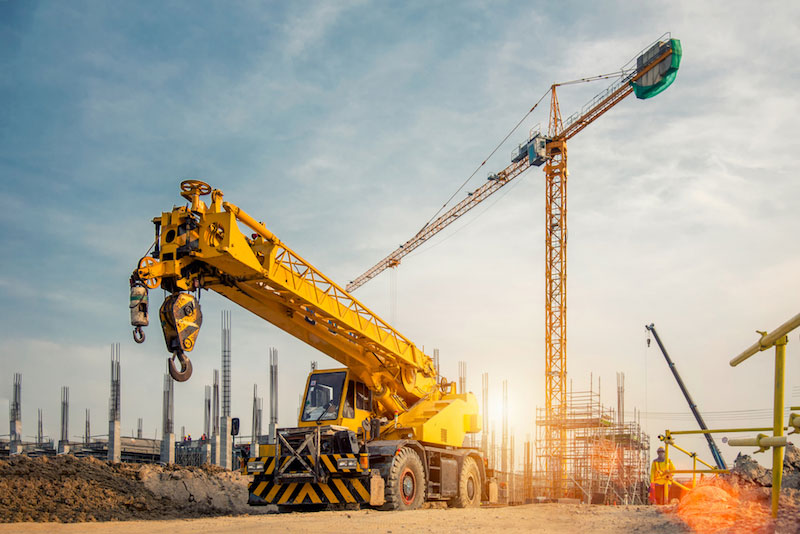Locate the Best Rental Company Near Me for Equipment
Locate the Best Rental Company Near Me for Equipment
Blog Article
Leasing Vs. Purchasing Building And Construction Devices: Making the Right Option for Your Task
When starting a construction task, one of the vital choices that forecast managers and stakeholders encounter is whether to rent or purchase construction equipment. Both choices have their advantages and disadvantages, making the option a pivotal one in the job planning process. The choice pivots on numerous variables such as cost considerations, project period, tools upkeep, scalability, danger, and versatility monitoring. Each element plays an essential duty in establishing one of the most appropriate path for the task's devices demands. aerial lift rental. Allow's explore these factors even more to understand exactly how they influence the decision-making process and inevitably the success of the project.
Cost Factors To Consider
Leasing tools typically calls for lower initial payments contrasted to purchasing, making it an attractive option for temporary jobs or professionals with budget constraints. In the lengthy run, continually leasing equipment can build up higher prices than buying, particularly for extensive jobs.
On the various other hand, getting construction equipment involves greater upfront expenses however can cause long-term savings, specifically for constant users or lasting jobs. Owning equipment offers adaptability, benefit, and the potential for resale value once the job is completed. Additionally, possessing tools enables personalization and familiarity with specific machinery, potentially boosting performance and productivity on-site. Ultimately, the decision in between renting out and purchasing building and construction equipment rests on the task's period, frequency of use, spending plan factors to consider, and long-term monetary objectives.
Project Duration

Alternatively, for long-term jobs or continuous construction job, buying devices can be the a lot more cost-effective choice. Buying equipment can lead to cost savings over time, specifically if the equipment will be frequently made use of. Furthermore, owning tools offers a sense of control over its accessibility and allows for modification to fit particular job requirements.

Tools Maintenance
Given the crucial role job period plays in figuring out the most affordable strategy in between buying and leasing building and construction equipment, the focus now changes towards analyzing the necessary aspect of devices upkeep. Correct upkeep is critical for making sure the ideal efficiency and longevity of building equipment. Leasing tools often comes with the advantage of having properly maintained machinery supplied by the rental firm. This can reduce the problem of maintenance jobs from the job proprietor or contractor, conserving effort and time. On the various other hand, having equipment calls for a positive technique to upkeep to protect against failures, ensure security, and prolong the equipment's life-span. Regular inspections, maintenance, and prompt fixings are needed to keep owned equipment in leading functioning condition. Consider upkeep excavator loader prices when determining in between leasing and getting, as overlooking upkeep can result in expensive repair work, downtime, and job delays. Inevitably, a well-maintained construction tools fleet, whether leased or owned, is vital for the effective and efficient completion of construction projects.
Adaptability and Scalability
In the world of building tools management, the aspect of flexibility and scalability holds substantial significance for job effectiveness and resource utilization. Choosing to rent out building devices gives a high degree of adaptability as it allows for the fast adjustment of devices kinds and amounts based on the evolving needs of a job.
In addition, scalability, an additional critical aspect, is inherently linked to adaptability. Leasing construction devices provides the advantage of quickly scaling operations up or down as project demands vary. Contractors can rapidly exchange or include devices to match the project's transforming needs without the restraints of owning assets that may come to be underutilized or obsolete. This capability to range resources effectively can result in price financial savings and improved project timelines, making renting a beneficial choice for projects calling for versatility and receptive source appropriation.
Threat Management
Effective risk management in construction equipment operations is paramount to guaranteeing task success and mitigating potential financial losses. Building tasks inherently entail numerous dangers, such as equipment failures, accidents, and project delays, which can substantially impact the task timeline and budget plan. By very carefully taking into consideration the threats connected with owning or renting out building and construction tools, job supervisors can make enlightened decisions to minimize these possible threats.
Leasing building devices can use a level of threat reduction by transferring the responsibility of repair and maintenance to the rental business. This can reduce the monetary burden on the task proprietor in case of unforeseen tools failings (scissor lift rental). web Furthermore, leasing provides the versatility to access specialized devices for specific job stages, decreasing the risk of possessing underutilized machinery
On the other hand, having building and construction devices provides a sense of control over its use and upkeep. However, this additionally indicates birthing the full obligation for fixings, maintenance prices, and depreciation, boosting the economic threats related to equipment ownership. Careful threat assessment and factor to consider of aspects such as task duration, devices application, and maintenance needs are critical in figuring out the most suitable option for effective risk management in building tasks.
Verdict
Finally, when determining between getting and renting out building devices, it is important to consider cost, project period, equipment maintenance, flexibility, danger, and scalability monitoring. Each factor plays a critical role in identifying one of the most ideal option for the job at hand. By thoroughly assessing these elements, task supervisors can make an enlightened choice that lines up with their spending plan, timeline, and overall job objectives.

Report this page